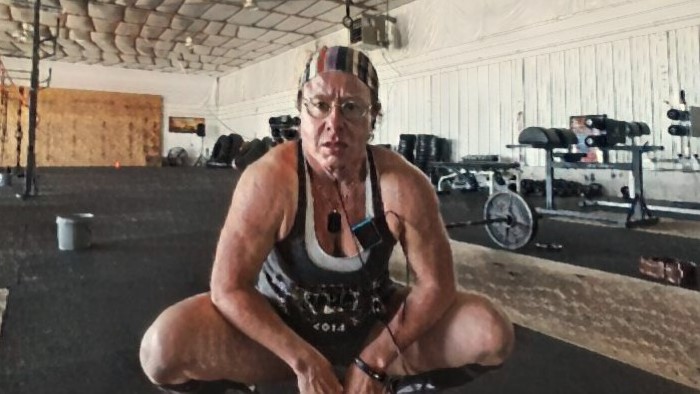
In the last log, I showed how it is possible to maintain strength (and even increase it) without training equipment (a gym). Now that most people have to stay at home most of the time, these is useful information. There is nothing new there and most, if not all, trainers and gyms are publishing articles to help their clients workout while at home.
Most of the workout programs for gym-less people already combine a strength and a conditioning component. The strength and muscle hypertrophy component is emphasized in eccentric and isometric actions. That’s why your circus gymnasts and male dancers look as jacked as weightlifters.
There is a third, rarely mentioned component that is even more severely compromised in the home office life: “low-intensity-steady state” cardio-respiratory training. Most of the strength community – both strength athletes and non-competitive strength training practitioners – gives little attention, if any, to this. After all, to provide excellent conditioning, we have a billion variations of intense, short interval, short total duration training. The fads started with a misinterpretation of the original research by Tabata and collaborators (1996). In the original research, the authors concluded:
“In conclusion, this study showed that moderate-intensity aerobic training that improves the maximal aerobic power does not change anaerobic capacity and that adequate high-intensity intermittent training may improve both anaerobic and aerobic energy supplying systems significantly, probably through imposing intensive stimuli on both systems.”
As the coaching community adopted the acronym HIIT uncritically as the exercise panacea, especially with the Crossfit WODs (that really are not what the original research, performed in a cycle ergometer with seven to eight sets of 20-s exercise at an intensity of about 170% of VO2max with a 10-s rest between each bout), lower intensity steady state exercises (LISS) were forgotten or even actively rejected. Years later, Tabata embraced the fatherhood of the long-lasting fad and lower intensity training only shows up in clinical studies about cardiovascular disease, pulmonary disease, and obesity patients, among other populations suffering from disabling conditions.
However, the “healthy life” is one full of LISS. When I had a baby, my life consisted of many hours of LISS every day. During a decade of laboratory life, again, I was mostly engaging in LISS most of the time: I had to prepare culture media, weigh things in the analytic scale, prepare electrophoreses, pick up isotopes at the nuclear research building, bring them back, store them, clean stuff, mess up stuff and rarely, very rarely, sit down to analyze results.
Most of us, with our asses chair-bound, would have a hard time babysitting a healthy baby for 24h or being a research or field assistant on “hands-on” studies.
One of my friends is an ER physician. His life consists of about 80% walking and 20% sitting down (researching items, filling patient data and prescriptions).
That’s a lot of LISS.
I am privileged to have an amazing home gym outfitted with – surprise! – elitefts equipment. Conditioning is not hard at all and my preferred workouts are barbell complexes.
But everyone – not just lung-damaged people like me, with adult-onset asthma and recent pneumonia – needs LISS.
My choice is dancing. I’m embarrassed about how much I forgot basic technique. I practiced classic ballet for over a decade and another couple of years of modern dance. My last incursion in the dancing world was with belly-dancing and that was about 15 years ago. I find it hard to do the most basic movements and I sweat a lot: that’s my LISS.
If you are a guy, seriously, why not try dancing? Close the door, open your laptop and choose a tutorial. There’s nobody there to judge you but yourself.
There are hundreds of alternatives on youtube if you reject my suggestion.









